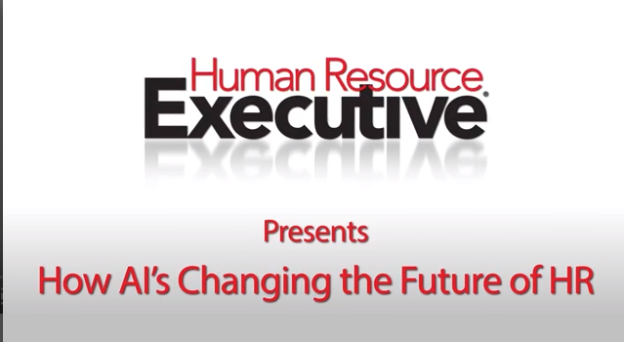Recently I was interviewed by a good friend from SHRM’s Public Affairs team, Mary Kaylor. She asked me a few questions about the HR Technology Conference, and you can read it all here. What I want to expound upon here is the final question in the interview. I had to be succinct in my response to her but I think it’s worth a discussion. The question that spurred today’s discussion:
As technology evolves, what do you think the future of HR will look like?
My dream is for HR to be as savvy with its technological approach and focus on data as someone within the sales and marketing organization. Ask a marketer how a campaign went, and she can tell you stats about landing page visits, conversion rates, and more.
Ask an HR leader today how a particular program is running, and they will probably give you a blank look. Okay, they might be able to give you anecdotal information or even a basic piece of information, but they can't drill down to the level of these other functions. I see this as a chicken-or-the-egg type discussion. Instead of waiting for solutions and support from the vendor community, HR leaders need to be demanding the tools and services to enable this change.
The more HR executives make data and analytics capabilities a requirement for their vendor partners, the more robust and mature those functionalities will become. HR in the future will be a technology-enabled, company-leading function that drives immense value through the people resources.
The Great Divide
One of the most striking things that hit me when I became a full-time analyst a few years ago was the divide between large and small organizations when it comes to technology. Small companies have limited solutions and budgets, often cobbling together free tools or going with the old standard for an HR system: Microsoft Excel.
There are companies that will budget something to get beyond 100% manual processes in areas like learning (training delivery/tracking) or recruiting (applicant tracking). But it’s still an ad hoc approach and is hard to prove value.
Other companies at the larger end have already reaped the rewards of that initial technology implementation (time savings, reduced admin burden, etc.) This often comes in the form of a patchwork of systems and solutions that don’t integrate well, if at all. For instance, I spoke with a friend at a large (20k+ employee) firm and the company is using five different systems just to manage end-to-end recruiting. In the words of my friend, it’s a “Frankenstein” approach to getting the job done, and it’s not even all that effective at anything other than creating frustration for users.
Smaller companies are getting into the tech game thanks to solutions like Zenefits, but it’s still just a piece of the overall HR puzzle and doesn’t solve some of the challenges around integration, data, and decision-making.
One of the areas I’ve been keenly interested in over the recent months has been the slew of small to mid-market solutions that are serving the HR community with a variety of technologies and services. I’m going to be meeting with several of these firms this week at the HR Tech conference and hope to get some good insights about how they are helping to bring these smaller firms along.
The big suites are too complex for small companies. Just like paper and manual work don’t scale up beyond a hundred or two hundred employees, the massively complex systems offered by the large providers can’t scale down to fit the process needs of a small firm (assuming we ignore the price).
My Vision for HR
I want to see HR leaders being as intentional about technology as their counterparts in other areas of the business. Marketers are smarter and faster because of their technology. Why can’t HR see these tools as enablers of performance as well? As I said before, the HR function of the future will be a technology-enabled, company-leading function that drives immense value through its people resources. I don’t think tech is going to replace people any more than processes will replace people. I think it’s going to help us to deliver greater value to the workforce and to our employers over the long haul.
What are your thoughts? How has your firm used technology to support HR? If you haven’t, why not?


 In today’s conversation, I speak with George LaRocque, founder of HRWINS and co-moderator of Talent Product Plays, a Facebook group targeting users, sellers, and analysts in the talent technology space. We walk through some of the top ways that vendors can improve their demos as well as some key lessons for buyers and HR practitioners on how to evaluate and select their technologies. This time of year many companies are re-evaluating their approach to HR technology, and this conversation could influence how your own organization either succeeds or fails at finding the right software to enable your business to succeed.
In today’s conversation, I speak with George LaRocque, founder of HRWINS and co-moderator of Talent Product Plays, a Facebook group targeting users, sellers, and analysts in the talent technology space. We walk through some of the top ways that vendors can improve their demos as well as some key lessons for buyers and HR practitioners on how to evaluate and select their technologies. This time of year many companies are re-evaluating their approach to HR technology, and this conversation could influence how your own organization either succeeds or fails at finding the right software to enable your business to succeed.
 A human example of technology incompatibility
A human example of technology incompatibility